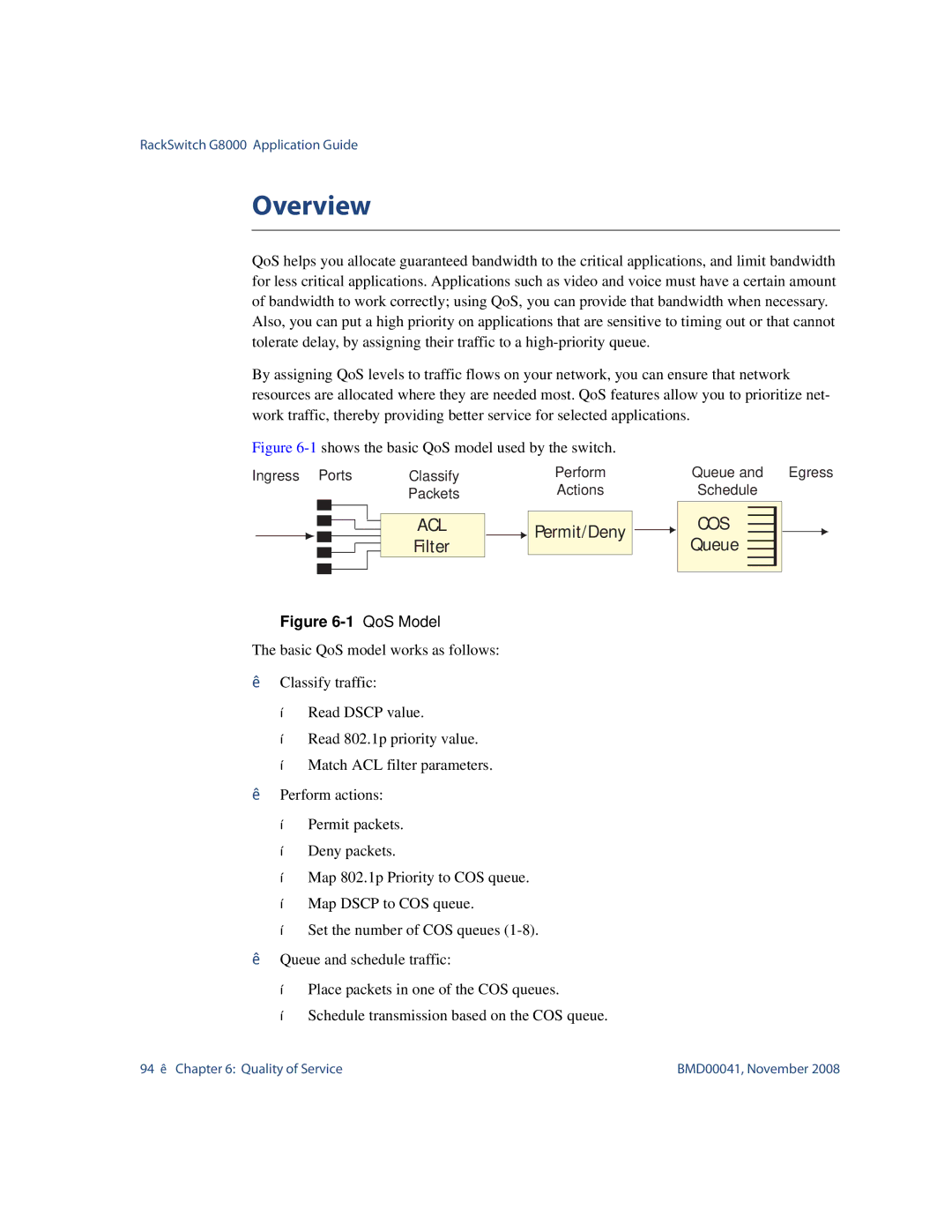
RackSwitch G8000 Application Guide
Overview
QoS helps you allocate guaranteed bandwidth to the critical applications, and limit bandwidth for less critical applications. Applications such as video and voice must have a certain amount of bandwidth to work correctly; using QoS, you can provide that bandwidth when necessary. Also, you can put a high priority on applications that are sensitive to timing out or that cannot tolerate delay, by assigning their traffic to a
By assigning QoS levels to traffic flows on your network, you can ensure that network resources are allocated where they are needed most. QoS features allow you to prioritize net- work traffic, thereby providing better service for selected applications.
Figure 6-1 shows the basic QoS model used by the switch.
Ingress Ports |
|
| Classify |
|
| Perform | ||||
|
|
|
|
|
|
| Packets |
|
| Actions |
|
|
|
|
|
|
|
|
|
|
|
|
|
|
|
|
|
| ACL |
|
| Permit/Deny |
|
|
|
|
|
|
|
|
| ||
|
|
|
|
|
|
| ||||
|
|
|
|
|
|
|
|
| ||
|
|
|
|
|
|
| Filter |
|
|
|
|
|
|
|
|
|
|
|
|
| |
|
|
|
|
|
|
|
|
|
|
|
|
|
|
|
|
|
|
|
|
|
|
|
|
|
|
|
|
|
|
|
|
|
Figure 6-1 QoS Model
The basic QoS model works as follows:
Classify traffic:
Read DSCP value.
Read 802.1p priority value.
Match ACL filter parameters.
Perform actions:
Permit packets.
Deny packets.
Map 802.1p Priority to COS queue.
Map DSCP to COS queue.
Set the number of COS queues
Queue and schedule traffic:
Place packets in one of the COS queues.
Schedule transmission based on the COS queue.
Queue and Egress Schedule
COS
Queue
94 Chapter 6: Quality of Service | BMD00041, November 2008 |
